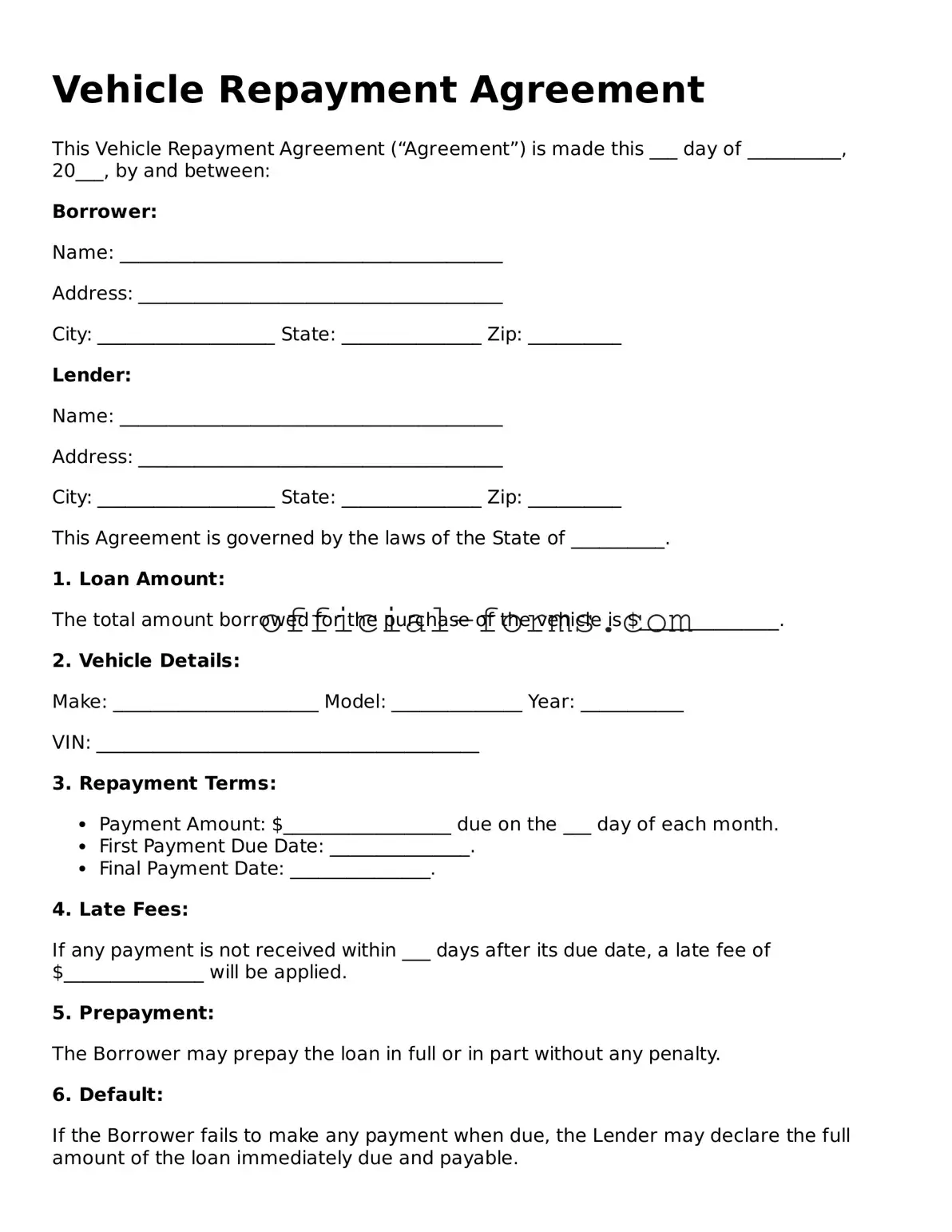Attorney-Verified Vehicle Repayment Agreement Template
The Vehicle Repayment Agreement form is a legal document that outlines the terms for repaying a loan taken out for purchasing a vehicle. This agreement protects both the lender and the borrower by clearly defining payment schedules, interest rates, and consequences for missed payments. Understanding this form is essential for anyone entering into a vehicle financing arrangement.
Open My Vehicle Repayment Agreement Now
